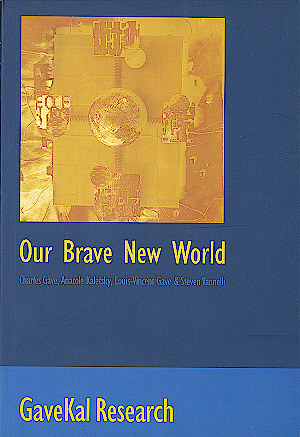By Ron | Jul 27, 2022
Books on China

Buddhism and Buddhists in China
by Lewis Hodus
A study of how Buddhist and Chinese cultures adapted to each other.

Diamond Sutra (Translated)
The Diamond Sutra is a Mahāyāna (Buddhist) sutra from the genre of Prajñāpāramitā (‘perfection of wisdom’). Together with the Heart Sutra, it is one of the most influential sutras in East Asia, with a major impact on Chan and Zen traditions. A copy of the Tang dynasty version was found in 1900, and is dated to 11 May 868 CE. It is the earliest dated printed book, and is the first known creative work with an explicit public domain dedication as its colophon states that it was created “for universal free distribution”.

⭐ ⭐ ⭐ ⭐ ⭐
A Roadmap for Troubling Times
Published 2013
by Louis-Vincent Gave
An optimistic review of global economic concerns and factors of growth, presenting an ‘investment roadmap’ for the coming years. An intentionally optimistic review can be forgiven for missing more pessimistic possibilities, but recent history seems to confirm that wishful thinking is not the best predictor of future trends.
Probably the most glaring omission is ignoring human-induced climate change while celebrating the boom in US oil shale fracking.
Although it would have been difficult to predict the COVID-19 pandemic along with the criminally inadequate response of some governments, such as the US Trump administration, by historical standards this was a comparatively mild pandemic and the high likelihood of a more virulent one emerging at any time can not be ignored.
The author did not expect a revolt of the under-educated classes in the West, or the resulting rise in neo-fascist populists.
Failing to predict the rise of neo-fascism, the author missed the growing fragmentation in the US-dominated global order caused by increased nativism. This in turn is promoting the opportunistic rise of antagonistic regional powers in particular Turkey, Israel, Russia and China.
The author did not predict the breakdown of US-China relations, which is leading to military tensions along the ‘first island chain’ and in South China Sea, economic decoupling/derisking, as well as a Chinese drift toward nationalistic authoritarianism in the face of economic and military encirclement by the US.
He probably could not have predicted the Russian invasion of Ukraine in response to overt NATO encroachment, or the genocidal overreach of the Israeli settler-colonial project, both of which greatly accelerate the end of the neo-liberal world order, the role of the US Dollar as the global reserve currency, and the increasingly rapid decline of the US imperial system which no longer possesses the military might to guarantee free and open navigation though all the world’s oceans for every compliant state.
Mark Twain once said, “There’s nothing sadder than a young pessimist or and old optimist.” Despite the omissions, this books is a healthy antidote to the paralyzing wisdom of experience.
Probably the most glaring omission is ignoring human-induced climate change while celebrating the boom in US oil shale fracking.
Although it would have been difficult to predict the COVID-19 pandemic along with the criminally inadequate response of some governments, such as the US Trump administration, by historical standards this was a comparatively mild pandemic and the high likelihood of a more virulent one emerging at any time can not be ignored.
The author did not expect a revolt of the under-educated classes in the West, or the resulting rise in neo-fascist populists.
Failing to predict the rise of neo-fascism, the author missed the growing fragmentation in the US-dominated global order caused by increased nativism. This in turn is promoting the opportunistic rise of antagonistic regional powers in particular Turkey, Israel, Russia and China.
The author did not predict the breakdown of US-China relations, which is leading to military tensions along the ‘first island chain’ and in South China Sea, economic decoupling/derisking, as well as a Chinese drift toward nationalistic authoritarianism in the face of economic and military encirclement by the US.
He probably could not have predicted the Russian invasion of Ukraine in response to overt NATO encroachment, or the genocidal overreach of the Israeli settler-colonial project, both of which greatly accelerate the end of the neo-liberal world order, the role of the US Dollar as the global reserve currency, and the increasingly rapid decline of the US imperial system which no longer possesses the military might to guarantee free and open navigation though all the world’s oceans for every compliant state.
Mark Twain once said, “There’s nothing sadder than a young pessimist or and old optimist.” Despite the omissions, this books is a healthy antidote to the paralyzing wisdom of experience.



Analects of Confucius (Translated)
by Eno
The Analects of Confucius is an anthology of brief passages that present the words of Confucius and his disciples, describe Confucius as a man, and recount some of the events of his life. The book may have begun as a collection by Confucius’s immediate disciples soon after their Master’s death in 479 BCE.
In traditional China, it was believed that its contents were quickly assembled at that time, and that it was an accurate record; the English title, which means “brief sayings of Confucius,” reflects this idea of the text. (The Chinese title, Lunyu 論語, means “collated conversations.”)
Modern scholars generally see the text as having been brought together over the course of two to three centuries, and believe little if any of it can be viewed as a reliable record of Confucius’s own words, or even of his individual views. Rather, much like the biblical Gospels, to which the text bears some resemblance, the Analects offers an evolving record of the image of Confucius and his ideas from the changing standpoints of various branches of the school of thought he founded.
In traditional China, it was believed that its contents were quickly assembled at that time, and that it was an accurate record; the English title, which means “brief sayings of Confucius,” reflects this idea of the text. (The Chinese title, Lunyu 論語, means “collated conversations.”)
Modern scholars generally see the text as having been brought together over the course of two to three centuries, and believe little if any of it can be viewed as a reliable record of Confucius’s own words, or even of his individual views. Rather, much like the biblical Gospels, to which the text bears some resemblance, the Analects offers an evolving record of the image of Confucius and his ideas from the changing standpoints of various branches of the school of thought he founded.

Confucianism and Modern Capitalism
by Max Weber
Early attempt to understand China from a European perspective.

Ethics and the Beauty of Human Becoming

Five Contemporary Challenges for Confucianism
by Chenyang Li

Mengzi
by Eno

Musings of a Chinese Mystic
by Lionel Giles

On Chinese Thought

Our Brave New World
Explains some of the important changes our world has gone through in recent years and tries to draw some investment implications.

Philosphical Influences on Education in China
by Donia Zhang

Readings From the Lu Wang School of Neo Confucianism
by Ivanhoe

The Discourses and Sayings of Confucius
by Ku Hung Ming

The Great Learning Doctrine of the Mean (Translated)
by Eno

Too Different for Comfort
This short book is an attempt to tie together four important themes which, in recent years, have formed the backbone of the Gavekal research effort.

Ways of Thinking of Eastern Peoples
Copyright (c) 2024, Ron Liskey



